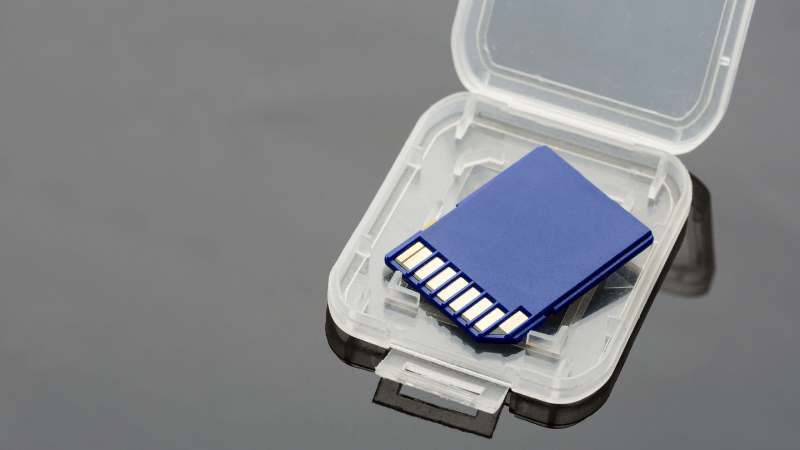Does the Blink Outdoor Camera Use an SD Card?
When you buy through our links, we may earn an affiliate commission.
The Blink Outdoor Camera is truly a testament that good things do come in small packages. This cloud-based system can record up to 7,200 seconds of video––or 1,440 five-second clips. You don’t even have to worry about erasing old videos; your camera will automatically write over dated footage. With that said, you may be wondering if you can still use an SD card with the device if you want to keep all your footage instead.
Because Blink Outdoor Camera primarily relies on the “cloud,” it does not use an SD card. You can access all of your recordings within the Blink app. However, the Sync Module 2 allows you to save data locally with a USB drive if you so choose.
Continue reading to learn more about expanding your Blink Outdoor Camera’s local storage.
Does the Blink Outdoor Camera Does Need an SD Card?
For reference, an SD (secure digital) card is sometimes referred to as a “memory card.” Basically, it allows you to save data up to the device’s storage capacity. However, your Blink Outdoor Camera (and its Sync Module 2) does not need this device because:
- Blink stores all of your data online in the cloud. As long as you have an internet connection, your device will transmit data to a library only you can access.
- Your camera is meant to fit in the palm of your hand. Adding an SD card slot could make it bigger, which is not ideal.
- While not necessary, Blink wants users to get a monthly subscription, which would increase your device’s cloud storage capacity.
However, if you do want to use local storage or prefer not to pay for the subscription, you can use a USB drive with your Sync Module 2 instead.
Using a USB Drive with the Blink Sync Module 2
You need a Sync Module for your Blink Outdoor Camera to work. If you’re confused about the difference between a plain Sync Module and a Sync Module 2, the newer model has a USB port while the latter does not. (But both of these products are compatible with your Blink Outdoor Camera, regardless of how long ago you purchased it.)
Additionally, these devices not only extend your camera’s battery life, but also allow you to connect to the internet. The Sync Module 2 USB slot serves two purposes:
- If you want to use a wired connection, you can connect a power adapter via the USB port.
- If you want to expand your device’s local storage, you can insert a thumb drive into the USB slot.
What Kind of USB Do I Need to Store Blink Camera Footage?
You need a certain kind of thumb drive to save footage to your Sync Module 2. Here are some things to keep in mind when going this route:
You Need a USB with Enough Memory
Make sure that your thumb drive meets these specifications, according to Blink:
- It must have anywhere from 1 GB to 256 GB of storage space. For reference, most clips are less than 10 MB, so this should be more than enough room.
- If you’re using an old thumb drive with these parameters, make sure that it has 375 MB of free space. Keep in mind that in the long-term, this low amount of storage won’t cut it.
Your USB Drive Needs to Be in the Correct Format
Your USB drive will need to be in the correct format before you can use it. The steps for formatting your device will depend on what type of operating system you have, as they differ for Windows and iOS systems. So:
- If you have a Windows computer, watch this video to learn more about formatting your thumb drive. Skip ahead to 1:44 to cut to the chase.
- If you have a Mac, tune into this video to learn about formatting your device.
You’ll need to have your USB drive in one of the following formats:
- ExFAT (Blink suggests using this method)
- FAT32 (Blink says this option could store over 16,000 clips a day)
- FAT (MS-DOS)
Once you’ve formatted your USB, plug it into your Sync Module 2. Then, give it a test run. If you’ve done it correctly, all of your footage should be stored on your USB drive.
How Can You Access Blink Camera Footage from the USB?
Per Blink, to access your USB drive’s footage, first, open the Blink app. Then:
- Tab on the Sync Module’s icon.
- Navigate to the Sync Module’s settings.
- Tap on the white arrow to the right of “Local Storage.”
- Press “Safe Eject USB.”
- Plug the USB into your computer.
- View the footage.
Do not remove your USB drive without ejecting it via the app first. Doing so could corrupt the device’s data, making it nearly impossible to view recordings.
In Conclusion
In summary, you don’t need an SD card to use your Blink Outdoor Camera. However, if you want to expand the device’s storage capacity, you could get a subscription or plug in a USB drive to your Sync Module 2 instead.

